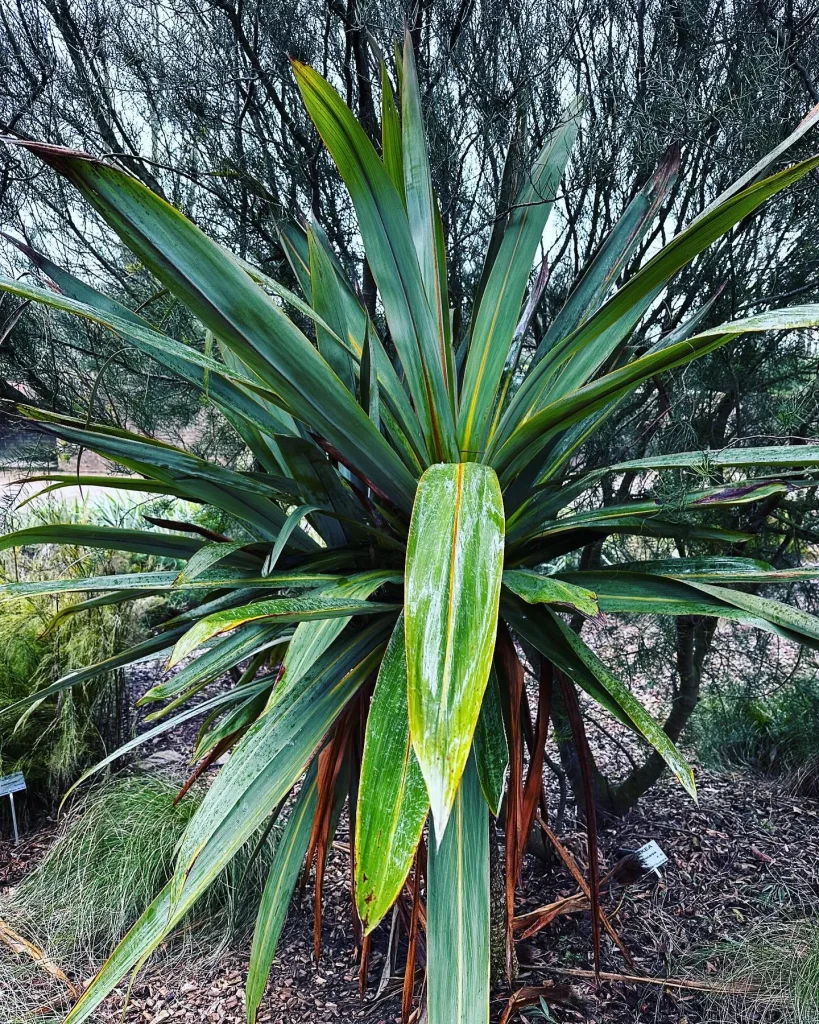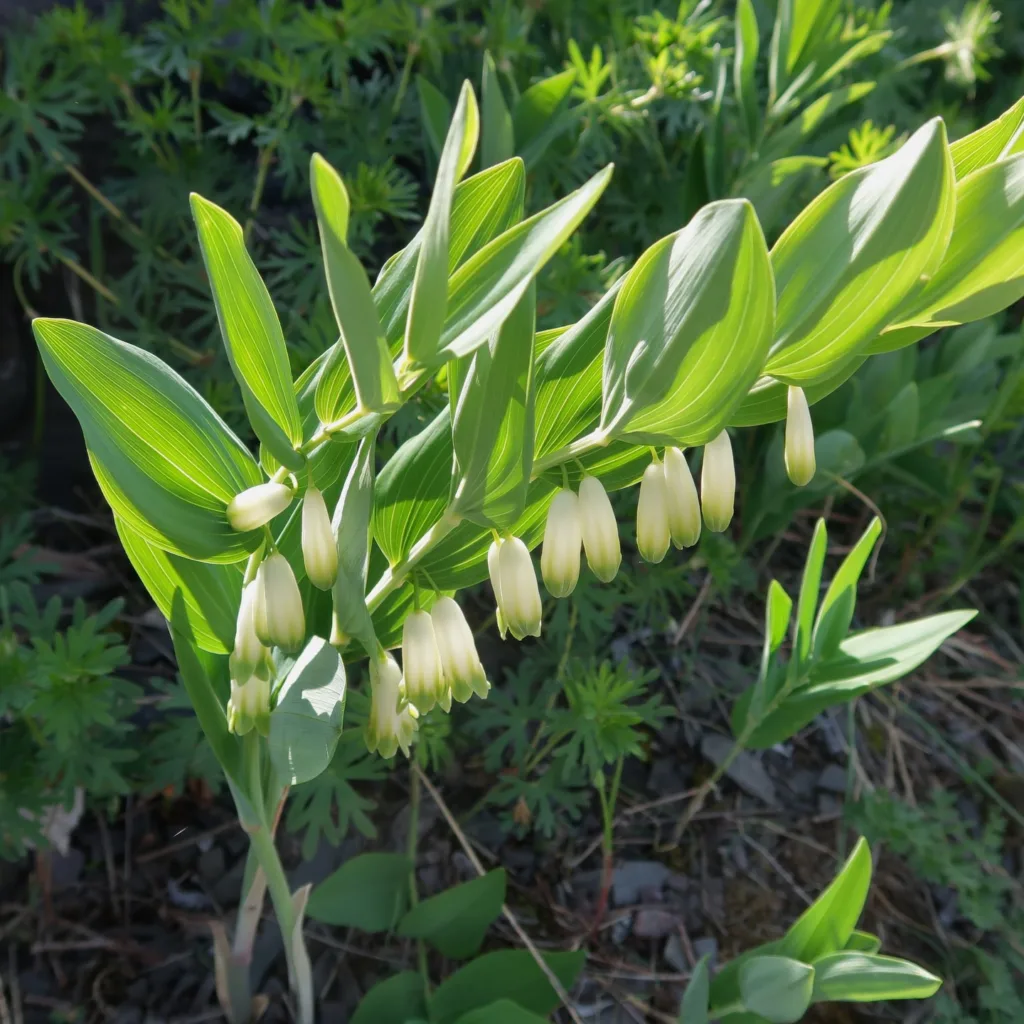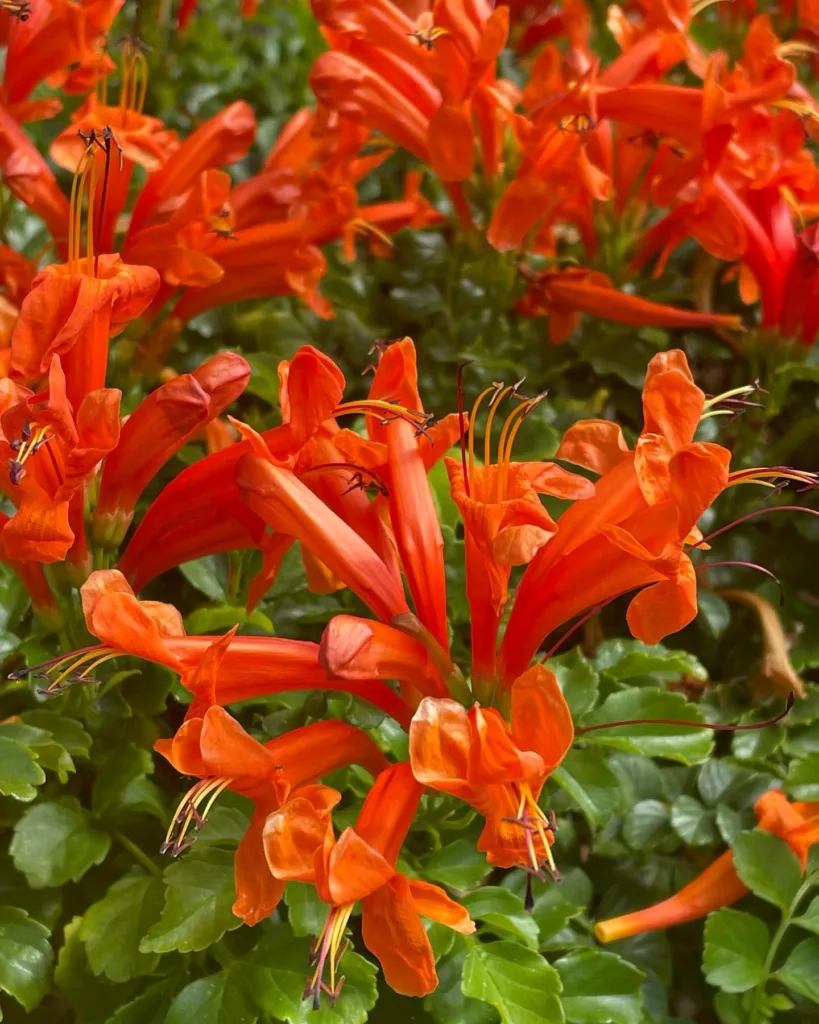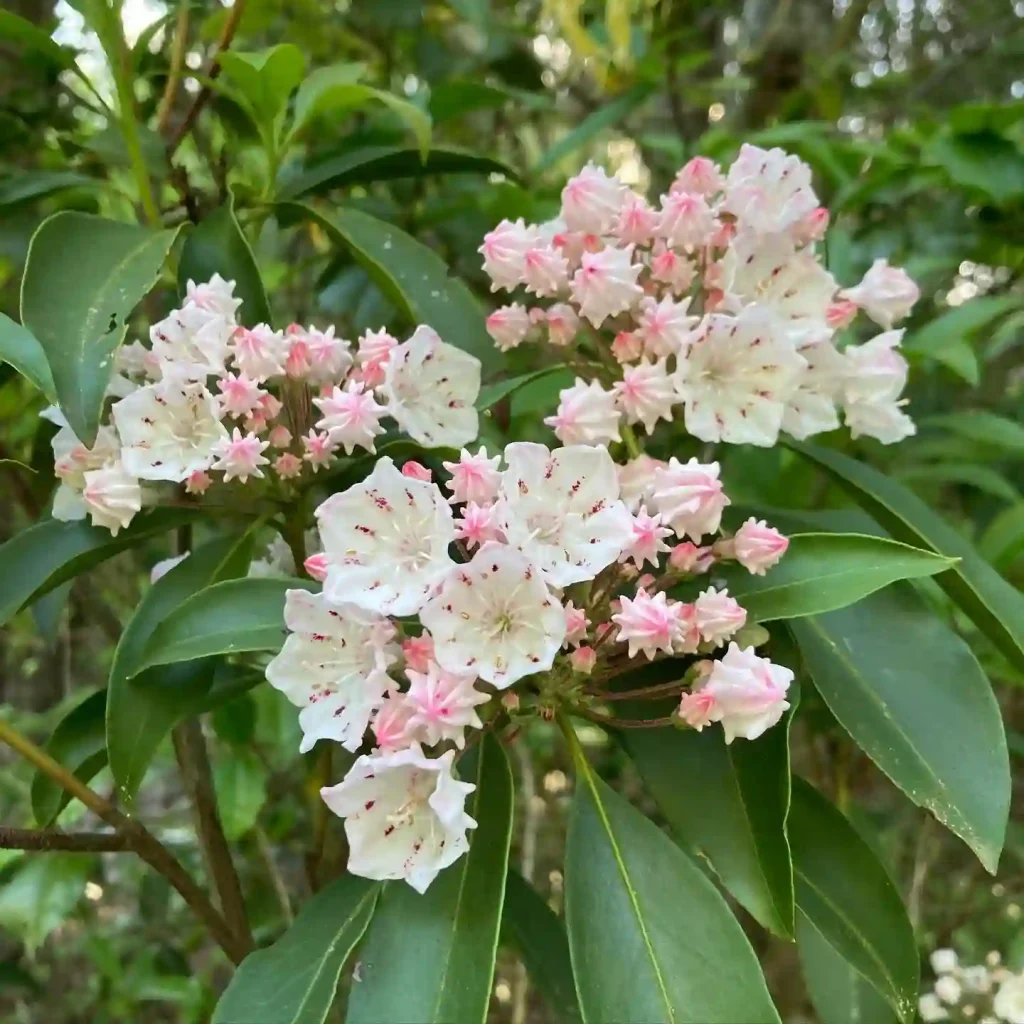
April 23 – Clematis
"Clematis, the climbing vine, represents April 23."
Clematis stands for ambition and elegance. You are driven and graceful, always reaching for the highest goals. Like this vine, you add beauty and purpose to your surroundings.
Clematis: A Climbing Obsession
My garden is my sanctuary, a place where I can lose myself in the beauty of nature. And among the many plants that grace my little Eden, Clematis holds a special place in my heart. These climbing wonders, with their vibrant blooms and graceful vines, have captivated me completely.
Clematis, a member of the buttercup family (Ranunculaceae), is a diverse genus boasting over 300 species. They hail from all corners of the globe, though they’re particularly abundant in Asia and North America. What unites them is their penchant for climbing, their delicate foliage, and most importantly, their stunning flowers. These blossoms come in a kaleidoscope of colors, from the purest white to the deepest purple, with countless shades in between. Some varieties even boast captivating patterns and unique shapes.
A World of Clematis
The sheer variety within the Clematis genus is astounding. Here are:
- Clematis acapulcensis Hook. & Arn.
- Clematis acerifolia Maxim.
- Clematis actinostemmatifolia W.T.Wang
- Clematis acuminata DC.
- Clematis acutangula Hook.f. & Thomson
- Clematis addisonii Britton ex Vail
- Clematis aethusifolia Turcz.
- Clematis affinis A.St.-Hil.
- Clematis afoliata Buchanan
- Clematis africolineariloba W.T.Wang
- Clematis akebioides (Maxim.) H.J.Veitch
- Clematis akoensis Hayata
- Clematis albicoma Wherry
- Clematis alborosea Ulbr.
- Clematis alpina (L.) Mill. Plant FAQs: Clematis Alpina
- Clematis alternata Kitam. & Tamura
- Clematis andersonii (C.B.Clarke ex Kunze) H.Eichler
- Clematis antonii (Elmer) L.Eichler
- Clematis apiculata Hook.f. & Thomson
- Clematis apiifolia DC.
- Clematis archboldiana Merr. & L.M.Perry
- Clematis arenicola T.Murphy & D.Estes
- Clematis aristata R.Br. ex Ker Gawl.
- Clematis armandi Franch.
- Clematis aureolata D.Falck & Lehtonen
- Clematis austroanatolica Ziel. & Kit Tan
- Clematis austrogansuensis W.T.Wang & L.Q.Li
- Clematis baldwinii Torr. & A.Gray
- Clematis baominiana W.T.Wang
- Clematis barbellata Edgew.
- Clematis bigelovii Torr.
- Clematis bojeri Hook.
- Clematis bonariensis Juss. ex DC.
- Clematis bourdillonii Dunn
- Clematis bowkeri Burtt Davy ex W.T.Wang
- Clematis brachiata Thunb.
- Clematis brachyura Maxim.
- Clematis bracteolata Tamura
- Clematis brasiliana DC.
- Clematis brevicaudata DC.
- Clematis brevipes Rehder
- Clematis buchananiana DC.
- Clematis burmanica Lace
- Clematis cadmia Buch.-Ham. ex Hook.f. & Thomson
- Clematis calcicola J.S.Kim
- Clematis caleoides Standl. & Steyerm.
- Clematis campaniflora Brot.
- Clematis campestris A.St.-Hil.
- Clematis carrizoensis D.Estes
- Clematis catesbyana Pursh
- Clematis caudigera W.T.Wang
- Clematis chaohuensis W.T.Wang & L.Q.Huang
- Clematis chekiangensis C.Pei
- Clematis chengguensis W.T.Wang
- Clematis chinensis Osbeck
- Clematis chingii W.T.Wang
- Clematis chiupehensis M.Y.Fang
- Clematis chrysocarpa Welw. ex Oliv.
- Clematis chrysocoma Franch.
- Clematis cinnamomoides W.T.Wang
- Clematis cirrhosa L.
- Clematis clarkeana H.Lév. & Vaniot
- Clematis clemensiae H.Eichler
- Clematis clitorioides DC.
- Clematis coactilis (Fernald) Keener
- Clematis coahuilensis D.J.Keil
- Clematis columbiana (Nutt.) Torr. & A.Gray
- Clematis commutata Kuntze
- Clematis comoresensis W.T.Wang
- Clematis connata DC.
- Clematis corniculata W.T.Wang
- Clematis courtoisii Hand.-Mazz.
- Clematis craibiana Lace
- Clematis crassifolia Benth.
- Clematis crassipes Chun & F.C.How
- Clematis crispa L.
- Clematis cruttwellii H.Eichler ex W.T.Wang
- Clematis cumberlandensis D.Rodgers, T.Murphy & D.Estes
- Clematis cunninghamii Turcz.
- Clematis dasyandra Maxim.
- Clematis dasyoneura (Korth.) Kuntze
- Clematis decipiens H.Eichler ex Jeanes
- Clematis delavayi Franch.
- Clematis delicata H.Eichler ex W.T.Wang
- Clematis diebuensis W.T.Wang
- Clematis dilatata C.Pei
- Clematis dimorphophylla W.T.Wang
- Clematis dingjunshanica W.T.Wang
- Clematis dioica L.
- Clematis dissecta Baker
- Clematis dolichopoda Brenan
- Clematis drummondii Torr. & A.Gray
- Clematis dubia (Endl.) P.S.Green
- Clematis elata Bureau & Franch.
- Clematis elisabethae-carolae Greuter
- Clematis elobata (S.X.Yan) S.X.Yan & L.Xie
- Clematis erectisepala L.Xie, J.H.Shi & L.Q.Li
- Clematis falciformis H.Perrier
- Clematis fasciculiflora Franch.
- Clematis fawcettii F.Muell.
- Clematis fengii W.T.Wang
- Clematis finetiana H.Lév. & Vaniot
- Clematis flammula L.
- Clematis flammulastrum Griseb.
- Clematis flavidonitida W.T.Wang
- Clematis florida Thunb. Plant FAQs: Clematis Florida
- Clematis foetida Raoul
- Clematis formosana Kuntze
- Clematis forsteri J.F.Gmel.
- Clematis fremontii S.Watson
- Clematis fruticosa Turcz.
- Clematis fulvicoma Rehder & E.H.Wilson
- Clematis fulvofurfuracea W.T.Wang
- Clematis fusca Turcz.
- Clematis gentianoides DC.
- Clematis gialaiensis Serov
- Clematis glauca Willd.
- Clematis glaucophylla Small
- Clematis glycinoides DC.
- Clematis gouriana Roxb. ex DC.
- Clematis gracilifolia Rehder & E.H.Wilson
- Clematis grahamii Benth.
- Clematis grandidentata (Rehder & E.H.Wilson) W.T.Wang
- Clematis grandiflora DC.
- Clematis grandifolia (Staner & J.Léonard) M.Johnson
- Clematis grata Wall.
- Clematis gratopsis W.T.Wang
- Clematis graveolens Lindl.
- Clematis grewiiflora DC.
- Clematis grossa Benth.
- Clematis guadeloupae Pers.
- Clematis gulinensis W.T.Wang & L.Q.Li
- Clematis guniuensis W.Y.Ni, R.B.Wang & S.B.Zhou
- Clematis haenkeana C.Presl
- Clematis hagiangensis N.T.Do
- Clematis hancockiana Maxim.
- Clematis hastata Finet & Gagnep.
- Clematis hayatae Kudô & Masam.
- Clematis hedysarifolia DC.
- Clematis heracleifolia DC.
- Clematis herrei H.Eichler
- Clematis hexapetala Pall.
- Clematis heynei M.A.Rau
- Clematis hilariae Kovalevsk.
- Clematis hirsuta Perr. & Guill.
- Clematis hirsutissima Pursh
- Clematis horripilata D.Falck & Lehtonen
- Clematis hothae Kurz
- Clematis huangjingensis W.T.Wang & L.Q.Li
- Clematis huchouensis Tamura
- Clematis hupehensis Hemsl. & E.H.Wilson
- Clematis ibarensis Baker
- Clematis incisodenticulata W.T.Wang
- Clematis insidiosa Baill.
- Clematis integrifolia L. Plant FAQs: Clematis Integrifolia
- Clematis intraglabra W.T.Wang
- Clematis intricata Bunge
- Clematis iranica Habibi, Ghorbani & Azizian
- Clematis ispahanica Boiss.
- Clematis japonica Thunb.
- Clematis javana DC.
- Clematis jeypurensis Bedd. ex W.T.Wang
- Clematis jialasaensis W.T.Wang
- Clematis jingdungensis W.T.Wang
- Clematis jingxiensis W.T.Wang
- Clematis kakoulimensis Schnell
- Clematis khasiana (Brühl) W.T.Wang
- Clematis khuzestanica Dinarvand
- Clematis kirilowii Maxim.
- Clematis kockiana C.K.Schneid.
- Clematis koreana Kom.
- Clematis korthalsii H.Eichler
- Clematis kweichouwensis C.Pei
- Clematis ladakhiana Grey-Wilson
- Clematis lancifolia Bureau & Franch.
- Clematis lanuginosa Lindl. Plant FAQs: Clematis Lanuginosa – Woolly Clematis
- Clematis lasiandra Maxim.
- Clematis lasiantha Nutt.
- Clematis lathyrifolia Besser ex Trautv.
- Clematis latisecta (Maxim.) Prantl
- Clematis laxistrigosa (W.T.Wang & M.C.Chang) W.T.Wang
- Clematis leptophylla (F.Muell.) H.Eichler
- Clematis leschenaultiana DC.
- Clematis liboensis Z.R.Xu
- Clematis ligusticifolia Nutt. Plant FAQs: Clematis Ligusticifolia
- Clematis linearifolia Steud.
- Clematis linearifoliola W.T.Wang
- Clematis lingyunensis W.T.Wang
- Clematis lishanensis (T.Y.A.Yang & T.C.Huang) Luferov
- Clematis liuzhouensis Y.G.Wei & C.R.Lin
- Clematis longicauda Steud. ex A.Rich.
- Clematis longipes Freyn
- Clematis longistyla Hand.-Mazz.
- Clematis loureiroana DC.
- Clematis lushuiensis W.T.Wang
- Clematis macgregorii Merr.
- Clematis macropetala Ledeb.
- Clematis macrophylla (J.Raynal) W.T.Wang
- Clematis mae Z.Z.Yang & L.Xie
- Clematis maguanensis W.T.Wang
- Clematis malacoclada W.T.Wang
- Clematis malacocoma W.T.Wang
- Clematis manipurensis (Brühl) W.T.Wang
- Clematis marata Armstr.
- Clematis marmoraria Sneddon
- Clematis mashanensis W.T.Wang
- Clematis mauritiana Lam.
- Clematis melanonema W.T.Wang
- Clematis menglaensis M.C.Chang
- Clematis methifolia Hook.
- Clematis metouensis M.Y.Fang
- Clematis meyeniana Walp.
- Clematis microcuspis Baker
- Clematis microphylla DC.
- Clematis millefoliolata Eichler
- Clematis moisseenkoi (Serov) W.T.Wang
- Clematis mollissima (Hallier) H.Eichler
- Clematis montana Buch.-Ham. ex DC. Plant FAQs: Clematis Montana
- Clematis morefieldii Kral
- Clematis morii Hayata
- Clematis multistriata H.Eichler
- Clematis munroiana Wight
- Clematis nagaensis W.T.Wang
- Clematis nainitalensis W.T.Wang
- Clematis nannophylla Maxim.
- Clematis napaulensis DC.
- Clematis napoensis W.T.Wang
- Clematis ningjingshanica W.T.Wang
- Clematis nobilis Nakai
- Clematis novocaledoniaensis W.T.Wang
- Clematis nukiangensis M.Y.Fang
- Clematis obscura Maxim.
- Clematis obvallata (Ohwi) Tamura
- Clematis occidentalis (Hornem.) DC. Plant FAQs: Clematis Occidentalis – Western Clematis
- Clematis ochroleuca Aiton
- Clematis oligophylla Hook.
- Clematis orientalis L.
- Clematis otophora Franch. ex Finet & Gagnep.
- Clematis ouachitensis T.Murphy & D.Estes
- Clematis oweniae Harv.
- Clematis pamiralaica Grey-Wilson
- Clematis paniculata J.F.Gmel. Plant FAQs: Clematis Paniculata
- Clematis papillosa H.Eichler
- Clematis papuasica Merr. & L.M.Perry
- Clematis parviloba Gardner & Champ.
- Clematis pashanensis (M.C.Chang) W.T.Wang
- Clematis patens C.Morren & Decne.
- Clematis pauciflora Nutt.
- Clematis peii L.Xie, W.J.Yang & L.Q.Li
- Clematis perrieri H.Lév.
- Clematis peruviana DC.
- Clematis peterae Hand.-Mazz.
- Clematis petriei Allan
- Clematis pettimudiensis K.M.P.Kumar, R.Jagad. & G.Prasad
- Clematis phanerophlebia Merr. & L.M.Perry
- Clematis phlebantha L.H.J.Williams
- Clematis pianmaensis W.T.Wang
- Clematis pickeringii A.Gray
- Clematis pierotii Miq.
- Clematis pimpinellifolia Hook.
- Clematis pinchuanensis W.T.Wang & M.Y.Fang
- Clematis pingbianensis W.T.Wang
- Clematis pinnata Maxim.
- Clematis pitcheri Torr. & A.Gray
- Clematis plukenetii DC.
- Clematis pogonandra Maxim.
- Clematis polygama Jacq.
- Clematis populifolia Turcz.
- Clematis potaninii Maxim.
- Clematis pseudoconnata (Kuntze) Luferov
- Clematis pseudootophora M.Y.Fang
- Clematis pseudopogonandra Finet & Gagnep.
- Clematis pseudopterantha Kadota & Nob.Tanaka
- Clematis pseudoscabiosifolia H.Perrier
- Clematis pseudotubulosa B.K.Park
- Clematis psilandra Kitag.
- Clematis pterantha Dunn
- Clematis puberula Hook.f. & Thomson
- Clematis pubescens Hügel ex Endl.
- Clematis pycnocoma W.T.Wang
- Clematis qingchengshanica W.T.Wang
- Clematis quadribracteolata Colenso
- Clematis queenslandica W.T.Wang
- Clematis quinquefoliolata Hutch.
- Clematis ranunculoides Franch.
- Clematis recta L.
- Clematis rehderiana Craib
- Clematis repens Finet & Gagnep.
- Clematis reticulata Walter
- Clematis rhodocarpa Rose
- Clematis rhodocarpoides W.T.Wang
- Clematis rigoi W.T.Wang
- Clematis robertsiana Aitch. & Hemsl.
- Clematis roylei Rehder
- Clematis rubifolia C.H.Wright
- Clematis rufa Rose
- Clematis rutoides W.T.Wang
- Clematis sarezica Ikonn.
- Clematis satomiana Kadota
- Clematis sclerophylla W.T.Wang
- Clematis serratifolia Rehder
- Clematis shenlungchiaensis M.Y.Fang
- Clematis shensiensis W.T.Wang
- Clematis siamensis Drumm. & Craib
- Clematis sibiricoides Nakai
- Clematis sichotealinensis Ulanova
- Clematis simensis Fresen.
- Clematis sinii W.T.Wang
- Clematis smilacifolia Wall. Plant FAQs: Clematis Smilacifolia
- Clematis socialis Kral
- Clematis songorica Bunge
- Clematis spathulifolia (Kuntze) Prantl
- Clematis speciosa (Makino) Makino
- Clematis staintonii W.T.Wang
- Clematis stans Siebold & Zucc.
- Clematis stenanthera H.Eichler
- Clematis strigillosa Baker
- Clematis subreticulata (Harb. ex Small) Harb. ex T.Murphy & D.Estes
- Clematis subtriloba Nees ex G.Don
- Clematis subtriternata Nakai
- Clematis subumbellata Kurz
- Clematis takedana Makino
- Clematis tamurae T.Y.A.Yang & T.C.Huang
- Clematis tangutica (Maxim.) Korsh.
- Clematis tashiroi Maxim.
- Clematis tengchongensis W.T.Wang
- Clematis tenuimarginata H.Eichler
- Clematis tenuipes W.T.Wang
- Clematis teretipes W.T.Wang
- Clematis terminalis T.Murphy, Floden & D.Estes
- Clematis terniflora DC. Plant FAQs: Sweet Autumn Clematis – Clematis Terniflora
- Clematis teuszii (Kuntze) Engl.
- Clematis texensis Buckley
- Clematis thaiana Tamura
- Clematis thaimontana Tamura
- Clematis thalictrifolia Engl.
- Clematis theobromina Dunn
- Clematis tibetana Kuntze
- Clematis tientaiensis (M.Y.Fang) W.T.Wang ex Z.Z.Zhang, Z.H.Chen, Feng Chen, W.Y.Xie & G.Y.Li
- Clematis tinghuensis C.T.Ting
- Clematis tomentella (Maxim.) W.T.Wang & L.Q.Li
- Clematis tongluensis (Brühl) Tamura
- Clematis tortuosa Wall. ex C.E.C.Fisch.
- Clematis tosaensis Makino
- Clematis tournefortii DC.
- Clematis trichotoma Nakai
- Clematis triloba Thunb.
- Clematis tripartita W.T.Wang
- Clematis tsaii W.T.Wang
- Clematis tsugetorum Ohwi
- Clematis tuaensis H.Eichler ex W.T.Wang
- Clematis tunisiatica W.T.Wang
- Clematis turyusanensis U.C.La & Chae G.Chen
- Clematis udayanii Anilkumar
- Clematis uhehensis Engl.
- Clematis ulbrichiana Pilg.
- Clematis uncinata Champ. ex Benth.
- Clematis urophylla Franch.
- Clematis uruboensis Lourteig
- Clematis vaniotii H.Lév. & C.E.Porter
- Clematis variifolia W.T.Wang
- Clematis venusta M.C.Chang
- Clematis versicolor Small
- Clematis vietnamensis W.T.Wang & N.T.Do
- Clematis villosa DC.
- Clematis vinacea Floden
- Clematis viorna L.
- Clematis virginiana L. Plant FAQs: Clematis Virginiana
- Clematis viridiflora Bertol.
- Clematis viridis (W.T.Wang & M.C.Chang) W.T.Wang
- Clematis vitalba L. Plant FAQs: Clematis Vitalba – Old Man’s Beard
- Clematis viticaulis Steele
- Clematis viticella L. Plant FAQs: Clematis Viticella
- Clematis wallichii W.T.Wang
- Clematis wangiana Mabb.
- Clematis wenshanensis W.T.Wang
- Clematis wightiana Wall. ex Wight & Arn.
- Clematis williamsii A.Gray
- Clematis wissmanniana Hand.-Mazz.
- Clematis wuxiensis Q.Q.Jiang & H.P.Deng
- Clematis xiangguiensis W.T.Wang
- Clematis xinhuiensis R.J.Wang
- Clematis yuanjiangensis W.T.Wang
- Clematis yui W.T.Wang
- Clematis yunnanensis Franch.
- Clematis yuntaishanica W.T.Wang
- Clematis zaireensis W.T.Wang
- Clematis zandaensis W.T.Wang
- Clematis zemuensis W.W.Sm.
- Clematis zeylanica (L.) Poir.
- Clematis zygophylla Hand.-Mazz.
Do deer eat clematis?
Absolutely, deer will eat clematis! I’ve learned this the hard way. A few years back, I planted some gorgeous clematis vines along my fence line, hoping they’d bring a splash of vibrant color to the yard. But then those pesky deer came along – they seemed to love those delicate blooms even more than I did. At first, it was just a few nibbles, but before long, there were only bare stems left. Nowadays, I either plant deer-resistant varieties of clematis or use some kind of repellant spray to try and keep the deer away.
Is clematis poisonous to dogs?
Unfortunately, yes, clematis can be harmful to dogs. I haven’t had a direct experience with my dog eating it, thank goodness, but I’ve always made sure to keep those pretty vines well out of reach. I did some research when I first planted them, because I know my furry friend is a curious chewer. From what I understand, clematis contains a substance that can cause some nasty side effects for dogs, like drooling, vomiting, and diarrhea. Better to be safe than sorry, so I keep my pup away from the clematis and stick to dog-friendly plants in his play areas.
How to pronounce clematis?
The pronunciation of “clematis” can be a bit tricky. I used to say “cluh-MAY-tis”, but then a gardening enthusiast friend gently corrected me. The most common pronunciation is “KLEM-uh-tis”. You emphasize that first syllable, and the middle syllable sounds like “uh.” It’s a beautiful word for a beautiful flower, but it definitely took me a little practice to get the hang of saying it right!
When to cut back clematis for winter?
The timing for cutting back clematis depends on the specific variety you have. It gets a bit confusing, and I used to mix things up until I made myself a little reminder chart. Some types don’t need much pruning at all, while others benefit from a hard cutback in late winter or early spring. Last year I made the mistake of not pruning back my late-blooming clematis, and it ended up being a tangled mess with blooms way too high to properly enjoy. Never again!
Do you deadhead clematis?
Yes, I usually try to deadhead my clematis. It can be a little time-consuming, but it really does seem to encourage a second flush of blooms. Plus, I find it kind of therapeutic to spend a few minutes in the garden, snipping away those faded flowers and admiring all the new growth. Honestly, sometimes I get a little lazy later in the season, but I’ve noticed the plants that are regularly deadheaded definitely perform better overall.
How to grow clematis from seed?
I’ve tried a few times to grow clematis from seed, but I’ll admit, my success has been pretty limited. Those seeds can be finicky! It takes patience, which I’m not always the best at, and the germination rate isn’t great. One year, I followed all the instructions, carefully planting the seeds and waiting, and waiting…and nothing. But another time, I was rewarded with a few spindly sprouts. My biggest tip is to collect lots of seeds, because only some of them will actually sprout. I’m still working on mastering growing clematis from seed, but I find it’s a satisfying challenge!
When to transplant clematis?
The best time to transplant clematis depends on my climate and a bit on my tolerance for risk. Ideally, I like to move them in the very early spring, just as they’re starting to show some green buds. The cooler temperatures and extra moisture in spring help the plant recover from the transplanting shock. But hey, life gets busy, and sometimes I forget! In a pinch, I’ve moved clematis in the fall too, after it’s gone dormant. It’s not ideal, and the plant might take a little longer to establish itself, but it’s usually okay if I get it done early enough. The key is to minimize stress on the plant, whenever I can.
Can clematis be grown in pots?
Definitely! In fact, I love growing clematis in pots. I have a small patio, so containers let me enjoy these beautiful flowering vines without taking up garden space. I’ve found that certain varieties do particularly well in pots, especially the more compact ones. There’s something so satisfying about seeing those gorgeous blossoms spilling out of a lovely ceramic pot. Plus, I can move them around to brighten up different spots on my patio throughout the season.
Can clematis grow in shade?
Yes, some clematis varieties can thrive in partial shade, but they’re not all the same. I learned that lesson when I planted a sun-loving variety in a shadier corner of the garden – it grew all tall and lanky with barely any flowers. My neighbor, who has a gorgeous shady garden filled with clematis, gave me some great tips. She recommended varieties like the alpine clematis and sweet autumn clematis for those shadier spots. Now my once-bare corner is filled with beautiful blooms, all thanks to picking the right clematis for the space!
What do clematis seeds look like?
Clematis seeds are quite interesting-looking! They have a small, brown seed at the base, attached to a long, feathery tail. This tail helps the seed get carried by the wind to spread and plant itself in new places. Here’s an image to help you visualize them:
I find it fascinating how nature designs these seeds for dispersal – they’re like tiny parachutes! Some clematis varieties have really long feathery tails, while others are shorter and stubbier.
Do hummingbirds like clematis?
Hummingbirds do sometimes enjoy clematis, although it’s not their absolute favorite. Varieties with smaller, tubular-shaped flowers tend to attract them more than the ones with large, flat blooms. The color matters too – red, orange, and pink shades can sometimes catch a hummingbird’s eye.
Here’s why clematis isn’t a hummingbird’s first choice:
- Not all blooms are easy to access: Some clematis flowers have a shape that makes it a little difficult for the hummingbird to reach the nectar deep inside.
- Nectar production varies: Not all varieties of clematis produce the same amount of nectar.
If you want to entice hummingbirds to visit your clematis, try planting varieties with these features:
Do rabbits eat clematis?
Sadly, yes, rabbits do seem to find clematis rather tasty. I’ve had my share of battles with those furry little nibblers! They especially enjoy the tender new growth in spring, sometimes munching down the vines before they ever get a chance to really grow. It’s frustrating, and it’s made me learn to love chicken wire. A few years ago, I started surrounding my most vulnerable clematis plants with simple barriers, which at least seems to discourage the worst of the rabbit snacking.
Is clematis poisonous to cats?
Unfortunately, yes, clematis is considered toxic to cats. The whole plant contains a substance that irritates a cat’s digestive system. While my cat doesn’t usually bother my flowers, I’m still very careful to make sure any clematis I plant is out of reach. If cats eat it, they might end up with drooling, vomiting, or diarrhea. It’s always better to be safe and keep our feline friends away from potentially harmful plants.
Why is my clematis not blooming?
Ah, the age-old gardener’s question: why won’t my beautiful clematis bloom? I’ve definitely experienced this frustration myself! There are a few common reasons:
- Wrong pruning time: I made the mistake of pruning my early-blooming variety too late in the fall, cutting off all those new flower buds. Always double-check the specific needs for your variety of clematis!
- Not enough sun: My first clematis ended up in a spot that got less sun than I thought. They really perform best with at least six hours of sunlight a day.
- Nutrient imbalance: Sometimes it’s an issue with the soil – too much nitrogen fertilizer will make lush leaves, but not enough blooms.
- Too young: Young clematis plants might need a couple of years to become established before they bloom reliably.
It can take a little detective work, but figuring out why your clematis isn’t happy often helps get those beautiful flowers back the next season!
Do clematis like acid soil?
No, clematis actually prefer a neutral to slightly alkaline soil pH. I always keep some lime on hand, just in case my soil is testing too acidic. Adding a bit of lime to raise the pH can make a big difference for my clematis! They seem to grow stronger and healthier, with more vibrant blooms, when the soil has a pH between 6.5 and 7.5.
Do clematis like coffee grounds?
While coffee grounds can be beneficial for some plants, they’re not the best choice for clematis. Clematis prefer slightly alkaline soil, and coffee grounds are acidic. Adding a lot of coffee grounds to the soil around your clematis could shift the pH too far, making it difficult for your plant to thrive. It’s generally better to use coffee grounds on acid-loving plants like blueberries or azaleas, and to stick with more neutral fertilizers for clematis.
If i die, water my plants!



